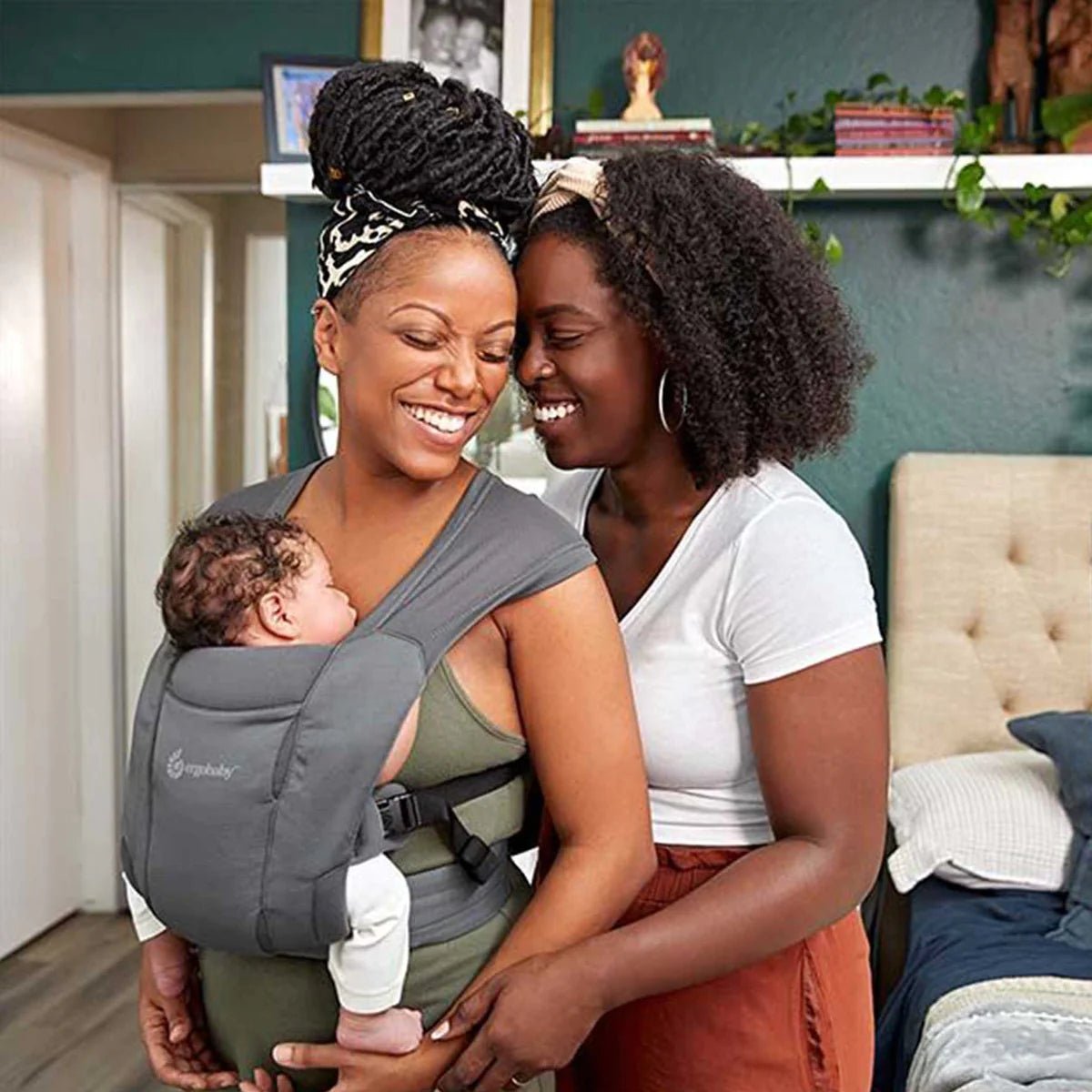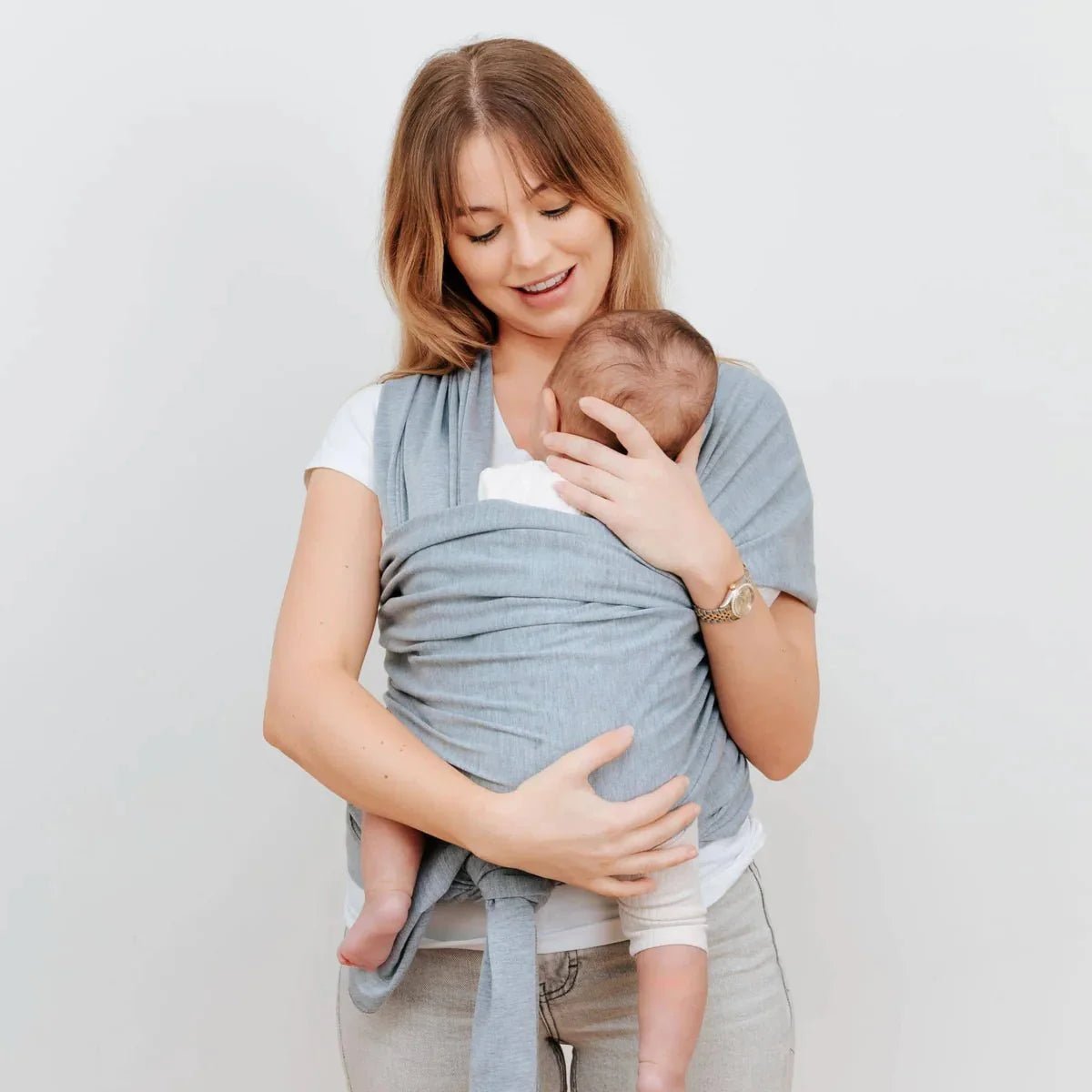Being a new parent can be overwhelming, but having a baby carrier can make the experience a whole lot easier. With the ability to carry your baby close to you, these convenient contraptions provide a safe and secure way to keep your little one snug while keeping your hands free. Whether you are going for a stroll in the park or doing household chores, a baby carrier allows you to bond with your baby while getting things done.
One of the key benefits of using a baby carrier is the physical closeness it offers. This promotes attachment and helps to establish a strong bond between you and your baby. It also provides a sense of security for your little bundle of joy, as they can feel your warmth and hear your heartbeat, just like when they were in the womb.
Moreover, using a baby carrier can provide relief for tired arms and aching backs. Instead of constantly holding your baby, a carrier evenly distributes their weight, making it more comfortable for you to carry them for extended periods of time.
In conclusion, a baby carrier is an essential tool for new parents, offering convenience, bonding opportunities, and physical comfort for both baby and caregiver.
Types of baby carriers (wrap, sling, structured)
When it comes to choosing a baby carrier, there are several options available on the market. Each type has its own unique features and benefits, so it's important to consider your needs and preferences before making a decision. Here are three popular types of baby carriers:
Wrap carriers
Wrap carriers are made of a long piece of fabric that is wrapped around the wearer's body to create a secure and comfortable pouch for the baby. They offer excellent support and flexibility, as they can be adjusted to fit any body shape or size. Wrap carriers are particularly suitable for newborns and young infants, as they provide a cozy and womb-like environment. However, they can be a bit tricky to master, as the wrapping technique requires practice and patience.
Ring sling carriers
Ring slings are a popular choice for parents who want a quick and easy way to carry their baby. They consist of a long piece of fabric with two rings attached to one end. The fabric is threaded through the rings, and the wearer can adjust the tension to create a secure and comfortable fit. Ring slings are great for breastfeeding on the go, as they provide privacy and support. They are also suitable for newborns and older babies, but may not be as supportive for extended periods of wear.
Structured carriers
Structured carriers, also known as soft-structured carriers, are the most popular type of baby carrier. They feature a structured seat for the baby and padded shoulder straps and waist belts for the wearer. Structured carriers are easy to put on and adjust, making them a convenient choice for parents who are always on the go. They are suitable for newborns and older babies, and some models can even accommodate toddlers. Structured carriers provide excellent support and weight distribution, making them comfortable for long periods of wear.
How to choose the right baby carrier for your needs
Choosing the right baby carrier can be a daunting task, given the many options available. However, by considering a few key factors, you can find the perfect carrier for your needs and preferences. Here are some things to consider when choosing a baby carrier:
Age and weight limits
First and foremost, consider the age and weight limits of the carrier. Some carriers are designed specifically for newborns, while others can accommodate older babies and toddlers. Make sure to choose a carrier that can support your baby's weight and provide adequate support for their developing bodies.
Comfort and fit
Comfort is essential for both you and your baby, so it's important to find a carrier that fits well and feels comfortable to wear. Look for carriers with adjustable straps and waist belts, as these can be customized to fit your body shape and size. Additionally, consider the padding and support provided by the carrier, especially if you plan on wearing your baby for extended periods.
Ease of use
Consider how easy the carrier is to use, especially if you will be using it frequently or on your own. Some carriers require intricate wrapping techniques, while others have simple buckle systems. Choose a carrier that you feel confident using and that can be adjusted easily.
Safety features
Safety should always be a top priority when choosing a baby carrier. Look for carriers that have secure buckles or rings, as well as adjustable straps to ensure a snug fit. Additionally, check for certifications or safety standards that the carrier meets, such as those set by the Juvenile Products Manufacturers Association (JPMA) or the Consumer Product Safety Commission (CPSC).
Style and design
While not the most important factor, the style and design of the carrier can still be a consideration. Some carriers come in a variety of colors and patterns, allowing you to express your personal style. However, remember that functionality and safety should always come first.
Safety tips for using a baby carrier
Using a baby carrier is generally safe when done correctly, but it's important to follow some safety guidelines to ensure the well-being of your baby. Here are some essential safety tips for using a baby carrier:
Follow the instructions
Always read and follow the manufacturer's instructions for your specific carrier. Each carrier may have different guidelines for proper use and positioning, so it's important to familiarize yourself with them.
Check for wear and tear
Regularly inspect your carrier for any signs of wear and tear, such as loose stitching or frayed fabric. If you notice any damage, refrain from using the carrier until it has been repaired or replaced.
Position your baby correctly
Ensure that your baby is positioned correctly in the carrier. Their face should be visible and clear from any obstructions, and their chin should not be pressed against their chest. The carrier should support their neck and head, especially if they are unable to hold their head up independently.
Monitor your baby's temperature
Babies are more susceptible to overheating, so it's important to monitor their temperature while in a carrier. Avoid overdressing them or using a carrier made from heavy or thick fabric, especially in warmer weather.
Be mindful of your surroundings
When using a baby carrier, be aware of your surroundings to avoid any potential hazards. Be cautious when bending or leaning forward, as this can affect your balance. Additionally, be mindful of objects or surfaces that could pose a risk to your baby.
Step-by-step guide on how to use a baby carrier
Using a baby carrier for the first time can be intimidating, but with a little practice, it can become second nature. Here is a step-by-step guide on how to use a baby carrier:
- Familiarize yourself with the carrier: Before using the carrier, take some time to familiarize yourself with its features and adjustments. Practice adjusting the straps and buckles to ensure a proper fit.
- Position the carrier correctly: Put the carrier on before placing your baby in it. Adjust the straps and buckles to ensure a snug fit. The carrier should be positioned high on your chest, with the baby's face visible and close enough for you to kiss.
- Place your baby in the carrier: Hold your baby securely and carefully lower them into the carrier. Support their neck and head as you slide them into the designated seat area. Make sure their legs are positioned comfortably and their back is supported.
- Adjust the carrier: Once your baby is in the carrier, make any necessary adjustments to ensure a proper fit. Tighten the straps and buckles to provide support and security. Ensure that the carrier is snug, but not too tight, allowing your baby to move their arms and legs freely.
- Check the positioning: Double-check the positioning of your baby to ensure their airways are clear and their chin is not pressed against their chest. Their face should be visible and easily accessible for monitoring.
- Practice walking and moving: Take a few steps and move around to ensure that the carrier feels secure and comfortable. Adjust the straps and buckles as needed to distribute the weight evenly across your shoulders and hips.
- Regularly check on your baby: While using a carrier, periodically check on your baby to ensure their comfort and well-being. Watch for signs of overheating or discomfort, and make any necessary adjustments.
- Practice, practice, practice: Using a baby carrier takes practice, so don't be discouraged if it feels awkward at first. With time, you will become more comfortable and confident in using the carrier.
Baby carrier accessories and additional features
In addition to the carrier itself, there are several accessories and additional features that can enhance your baby-wearing experience. Here are some popular options to consider:
Drool pads
Drool pads are small, absorbent pads that attach to the straps of the carrier. They help to protect the carrier from drool and teething messes, keeping it clean and fresh. Drool pads can be easily removed and washed, making them a convenient accessory for busy parents.
Teething pads
Teething pads are similar to drool pads but are designed to provide comfort and relief for teething babies. They attach to the straps of the carrier and have a textured surface for babies to chew on. Teething pads can help soothe sore gums and prevent the carrier from getting wet or damaged.
Sunshade
A sunshade is a handy accessory for protecting your baby from the sun's harmful rays. It attaches to the carrier and provides shade and UV protection. Sunshades are especially useful during outdoor activities or sunny days when you want to keep your baby cool and comfortable.
Storage pockets
Some carriers come with built-in storage pockets, allowing you to carry small essentials like keys, phones, or diapers without the need for an additional bag. These pockets are usually located on the waist belt or the front of the carrier, providing easy access to your belongings.
Removable/washable fabric
Many carriers have removable and washable fabric, making it easy to keep them clean and fresh. This is particularly useful when dealing with diaper blowouts or messy spills. Check if the carrier you are considering has removable fabric or is machine washable for added convenience.
Reviews and recommendations for popular baby carriers
With so many baby carriers available on the market, it can be challenging to choose the right one for your needs. To help you make an informed decision, here are some reviews and recommendations for popular baby carriers:
Carrier A
Review: Carrier A is a highly versatile and comfortable baby carrier that offers excellent support for both baby and caregiver. It features adjustable shoulder straps and waist belts, allowing for a customizable fit. The structured design provides great weight distribution, making it comfortable for long periods of wear. Users praise Carrier A for its ease of use and durability, as well as its stylish and modern design.
Recommendation: Carrier A is an excellent choice for parents who prioritize comfort, support, and ease of use. It is suitable for newborns and older babies, and the adjustable straps make it easy to switch between caregivers. Whether you are running errands or going for a hike, Carrier A is a reliable and stylish option.
Carrier B
Review: Carrier B is a popular wrap carrier that offers a snug and secure fit for newborns and young infants. The soft and stretchy fabric provides a cozy and comfortable environment for babies, promoting bonding and attachment. Users appreciate the simplicity and versatility of Carrier B, as it can be used in multiple carrying positions. However, some find the wrapping technique to be a bit challenging, especially for first-time users.
Recommendation: If you are looking for a wrap carrier that offers flexibility and closeness, Carrier B is a great option. It is perfect for newborns and young infants who crave the comfort and security of being held close. While the wrapping technique may require some practice, the benefits of using Carrier B make it worth the effort.
Carrier C
Review: Carrier C is a ring sling carrier that combines simplicity and versatility. It features a durable fabric and adjustable rings, allowing for easy adjustments and a secure fit. Users appreciate the lightweight and compact design of Carrier C, making it convenient for travel or quick trips to the store. However, some find that the weight distribution is not as even as with structured carriers, which can lead to discomfort during longer wear.
Recommendation: If you are looking for a quick and easy baby carrier that provides closeness and convenience, Carrier C is a good choice. It is ideal for shorter periods of wear and is perfect for breastfeeding on the go. Just be mindful of the weight distribution and make sure to adjust the carrier properly for optimal comfort.
Alternatives to baby carriers (strollers, wraps, backpacks)
While baby carriers offer numerous benefits, they may not be the right fit for every parent or situation. Fortunately, there are several alternatives available that can still provide a safe and convenient way to transport your baby. Here are some popular alternatives to baby carriers:
Strollers
Strollers are a classic choice for transporting babies and toddlers. They offer a comfortable and secure seat for your child, as well as storage space for essentials. Strollers are particularly useful for longer outings or when you need to carry additional items, such as groceries or diaper bags. However, they can be bulky and may not be suitable for navigating crowded spaces or rough terrain.
Wraps
Wraps are similar to wrap carriers but consist of a single, long piece of fabric that is wrapped around the wearer's body in various ways. They offer a customizable and snug fit, similar to being swaddled. Wraps are great for newborns and young infants, as they provide a cozy and secure environment. However, they can be more challenging to put on and adjust compared to other carriers.
Backpack carriers
Backpack carriers are designed for older babies and toddlers who can sit upright independently
Conclusion and final thoughts
Being a new parent can be overwhelming, but having a baby carrier can make the experience a whole lot easier. With the ability to carry your baby close to you, these convenient contraptions provide a safe and secure way to keep your little one snug while keeping your hands free. Whether you are going for a stroll in the park or doing household chores, a baby carrier allows you to bond with your baby while getting things done.











